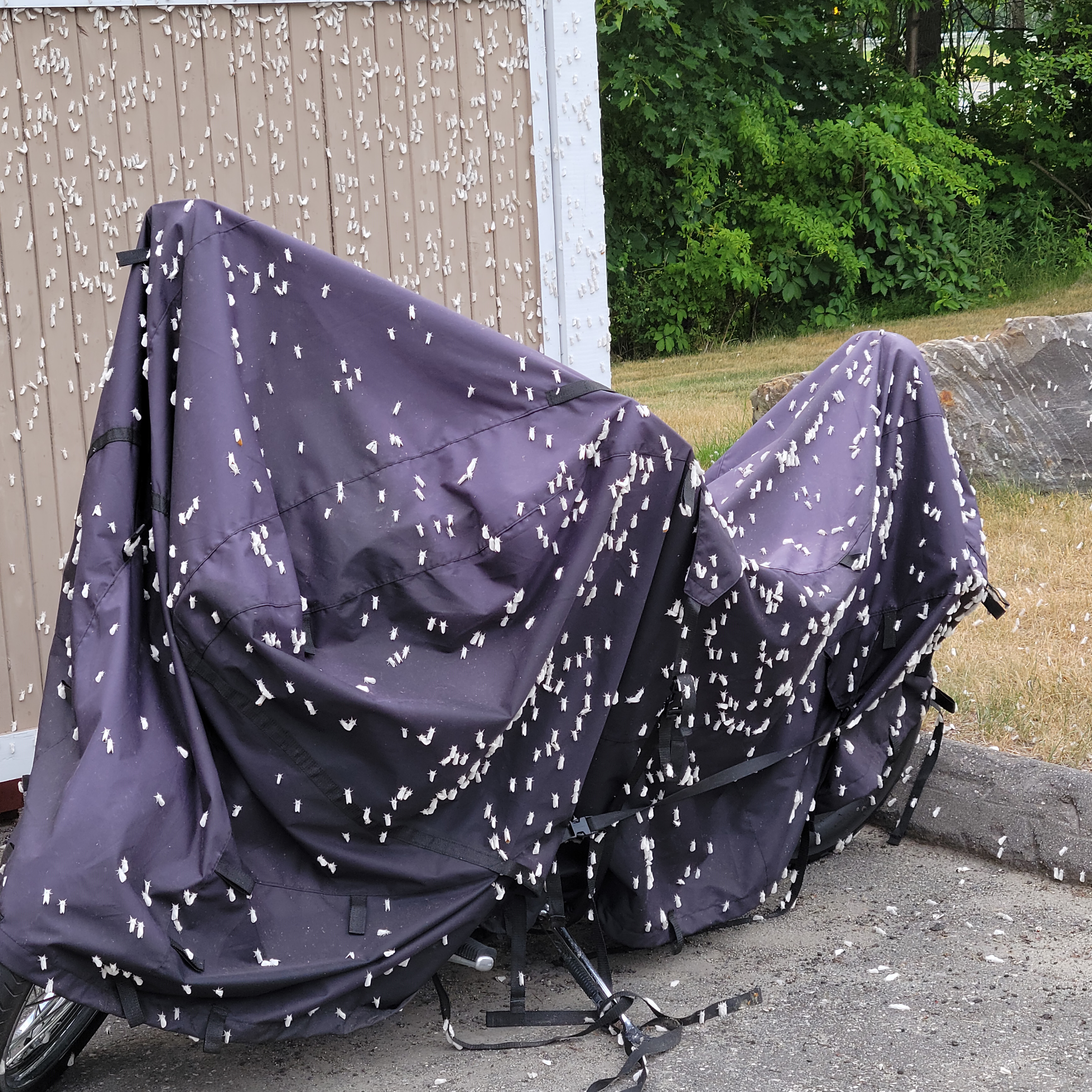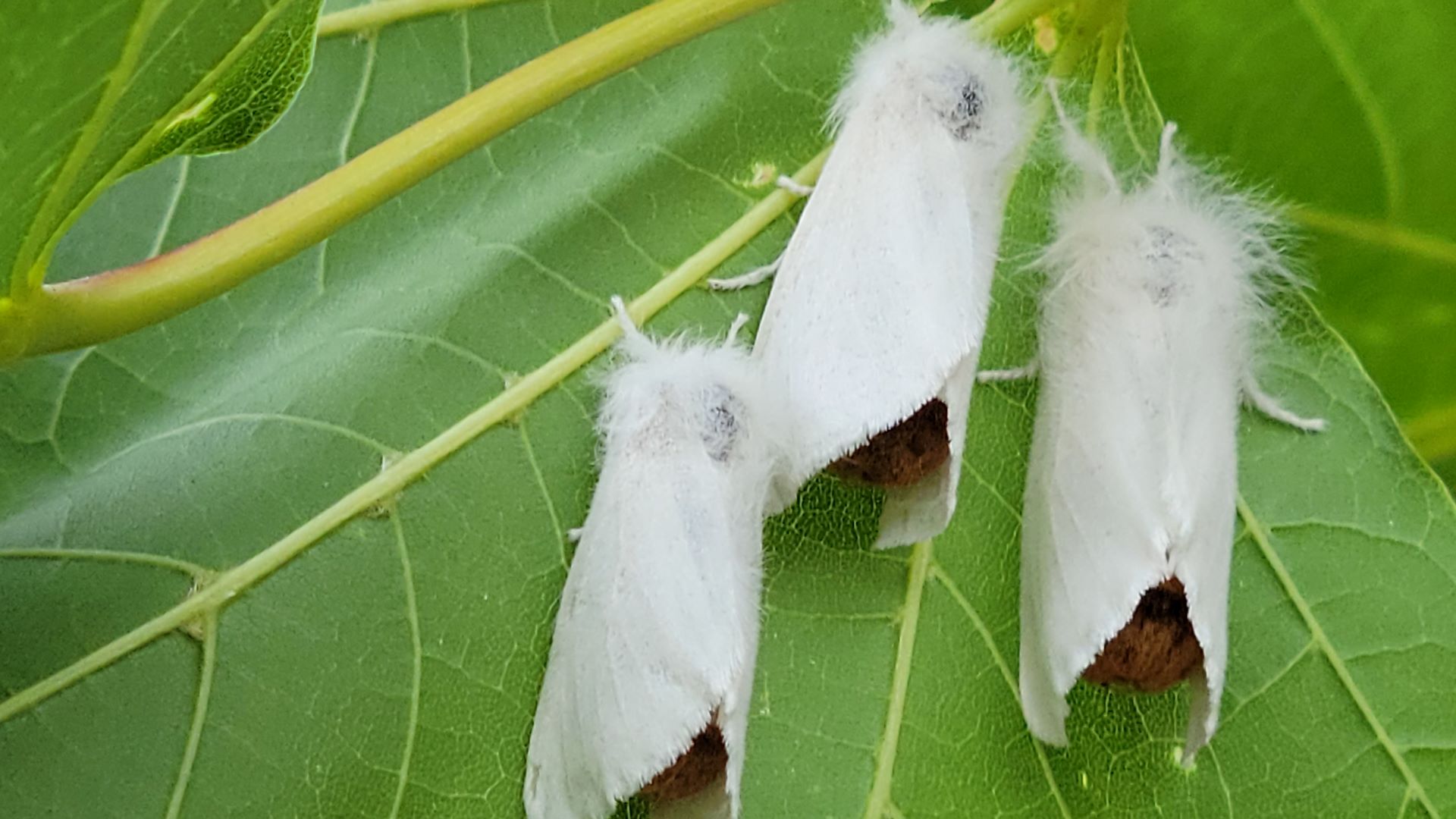Next summer may be just as itchy and painful as this one.
After one of Maine’s worst browntail moth seasons, there are signs already that 2022 could continue a years-long outbreak of the invasive insect that’s responsible for painful skin rashes and occasional dangerous breathing problems.
But winter and spring weather could determine the scale of next summer’s infestation. And ongoing research offers some hope for tamping down future outbreaks.
The influx of moths throughout the state this summer means there likely was successful mating, leading to a large number of eggs that become caterpillars, experts told The Maine Monitor.

A cool and wet spring, however, would help reduce the outbreak because a fungus that attacks browntail moth caterpillars thrives in those conditions. When the spring is hot and dry, like it has been in recent years, the fungus isn’t as effective in controlling the caterpillars.
For what it’s worth, The Farmer’s Almanac this month predicted that the coming winter will “flip flop” between mild and cold and stormy.
Maine is in a browntail moth outbreak that began in 2015 and has ramped up in recent years. The insect was found in every county but York this year, although it’s likely it was there in small numbers, said Tom Schmeelk, an entomologist with the Maine Forest Service. Webs were found in Aroostook County this year for the first time in decades after the insect likely hitchhiked there on cars.
The pest gained national attention this summer for irritating Mainers and visitors enjoying the outdoors. Tiny hairs from the caterpillar can cause a skin rash similar to poison ivy and remain toxic for up to three years. Severe reactions can include trouble breathing. The brown caterpillars are about 1.5 inches long with white stripes on their sides and two orange spots on their hind end.
The browntail moth was accidentally brought from Europe to Massachusetts more than a century ago. By the early 1900s, it had spread across New England.
To find out the full range and impact of the moth this summer, the Forest Service will conduct an aerial survey in early fall to note how many acres of trees have been impacted. The caterpillars consume part of the leaves, turning them brown, which is visible from a plane.
Last year, browntail moths impacted about 150,000 acres. The largest outbreaks in the early 2000s were typically less than 20,000 acres, Schmeelk said.
During the winter, the Forest Service will count caterpillar webs throughout the state. The two surveys together will give an idea of the infestation that could happen next summer.
Infestation could expand
While it’s early to predict, Schmeelk said, “the areas that are bad this year will probably be the same areas that are bad next year. There just might be some range expansion and some new towns that are included in the browntail survey.”

But the fungus that attacks the caterpillars also is widespread in small, isolated populations such as Blue Hill and Jefferson.
“That’s good news because that tells us that it is widespread and if we do happen to have that cool wet weather, we will likely see a large decrease in the population,” Schmeelk said.
While it’s possible one really rainy spring season could squash the outbreak, browntail moths are so rampant that it likely will take a couple of seasons, he said.

And with shorter, milder winters due to climate change, there’s a smaller window of cold conditions that naturally regulate the insect, said Jim Dill, pest management specialist for the University of Maine Cooperative Extension.
“Climate change in the winters can be a dramatic force in the population dynamics,” Dill said.
Mainers who find webs on their property this winter can hire an arborist to remove them or find more information from the Forest Service about how to safely remove the webs themselves.
Some cities, such as Bangor and Waterville, announced plans this summer to control the pest on a larger scale, including moth inventories and web clipping programs. Dill said this might be a good approach because it’s difficult to address the problem one property at a time.
Ongoing research may provide another solution for controlling the bug.
UMaine researchers provide hope
Angela Mech, assistant professor of forest entomology, and her colleagues at the University of Maine this summer conducted a pilot study to test pheromone traps for male browntail moths as a way to calculate population density. They will compare the number of trapped moths to the number of winter webs later found in the same area. After about four or five years of data, they will have a statistical model that can predict where the moths will be most prevalent, Mech said.

From there, Mech and her colleagues can create a “plume” of high concentrations of the female pheromone to confuse the males, making it difficult for them to find a mate.
The browntail population fluctuates in cycles, so a monitoring system will help researchers and officials predict when the populations are growing again to prevent future infestations from getting this bad, Mech said.
Browntail isn’t the only invasive insect threat in Maine. There’s been an increase of emerald ash borer and hemlock woolly adelgid, Mech said. And southern pine beetle, a native species typically found south of New Jersey, is creeping north with warming winters. Schmeelk said he’s concerned about the spotted lantern fly, which feeds on almost anything and is devastating to agriculture, drifting north into Maine as the climate warms.
But the browntail moth is unusual because it’s a “trifecta pest,” Mech said. The insect damages trees, which can affect an entire ecosystem; it harms orchards and plantations, affecting the economy; and it causes irritating rashes, affecting human health.
“We are always going to have pests that could affect our ecology and our economy,” Mech said. “Browntail moth is unique in that it’s all three that are being affected, which makes it quite the little beast.”







